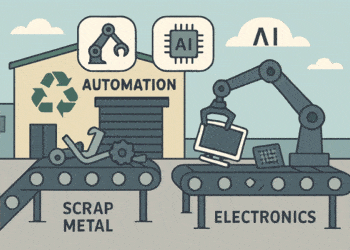Design systems can help you effectively deliver consistent and scalable solutions. Let’s explore what a design system is, how it can streamline your workflow, and how to create one!
If you’re on a UI design team or work closely with one, you’ve probably heard the following questions plenty of times.
What font should I use? Is this the proper space between the lines? What color should I use for the button? These doubts are even more present when there’s a new project or someone new joins the team. Furthermore, they may cause confusion, inconsistencies, and delays in development.
All of the above can only result in one thing: a low-quality product at a high cost due to lost time and resources.
The solution? Standards. More precisely, a set of standards called design systems.
What are design systems?
Design systems are standards and practices that allow companies to scale products, remain consistent, and operate efficiently. They comprise a collection of guidelines and reusable components that engineers can use to create solutions. Design systems constantly evolve, always following the growth of the product and technologies.
The evolving nature of these systems enables them to scale with your product, allowing for a productive and ever-improving development process. Additionally, since design systems include the company’s design concepts and standardized elements, they save engineers’ time. Furthermore, design systems enable the creation of consistent designs that provide users with unified, high-quality experiences.
Common elements that most design systems include:
- Pattern library
- Design principles
- Design guidelines
- Component library
How to create a design system?
Let’s look at the key steps to follow when building design systems for consistent and scalable solutions.
Audit the current design process
Start by analyzing the current design processes. Make an effort to review all of your product’s front-end design elements. Also, evaluate the existing tools to see if they are adequate or if it’s time to try something new.
This will help you spot inconsistencies and issues as well as good practices, allowing you to implement appropriate changes in your design system.
Define rules and principles
You can think of this step as creating a dictionary of your design language: you define the colors, typography, size and spacing, and imagery standards. What’s vital here is developing design principles that outline your organization’s values and how you want people to feel when using your products.
Include components that complement one another so that your teams can establish the brand’s feel and elicit the desired response from your target audience. However, remember that you can quickly adjust your design system whenever necessary. Hence, focus on laying a solid foundation for your team.
Here are some of the questions your principles should answer:
- What are we developing?
- What issue does the product solve?
- How will we construct this solution?
- Who is this product for?
Create pattern library
A pattern library is a collection of UI components that design teams use to streamline the development of digital products.
Your task during this part of the process is to gather all of your current UI elements and evaluate them in accordance with users’ needs and your specific goals. The main idea is to leave only the components you need. So you’ll be looking at input fields, buttons, images, and other components to eliminate everything that doesn’t correspond with your new design system concept.
Provide clear design system guidelines
Once you’ve established elements and patterns, it’s time to create design system guidelines. These documents clearly outline how teams can efficiently use information from the design system. For instance, you can describe how team members can contribute to the system and how you’ll manage productivity and consistency.
Clear guidelines enable teams to work more efficiently and quickly implement new changes while maintaining scalability and customer satisfaction.
Support engineers’ creativity
Although you have to implement certain standards and rules for creating a design system, giving room for creative expression is crucial. The system should allow designers to have more than just a single design direction. Instead, it should supply them with a collection of components and recommendations that leave enough freedom for them to be innovative.
The trick is to strike a perfect balance that allows developers to feel trusted to implement their ideas while remaining within your brand’s framework. To accomplish this, involve your team in creating a design system and present it as a set of recommendations rather than restrictions.
Start creating consistent and scalable designs
In 2022, the global UI and UX design market was worth $1160.95 million, and it’s showing no signs of slowing down! The reason is simple: user experiences are what matter the most.
And, with severe competition in the tech industry, you can’t afford to take risks with sloppy and unscalable solutions.
Therefore, whether you want to boost your in-house development process or streamline collaboration with external delivery teams, design systems can help you create consistent and scalable solutions you can be proud of.







